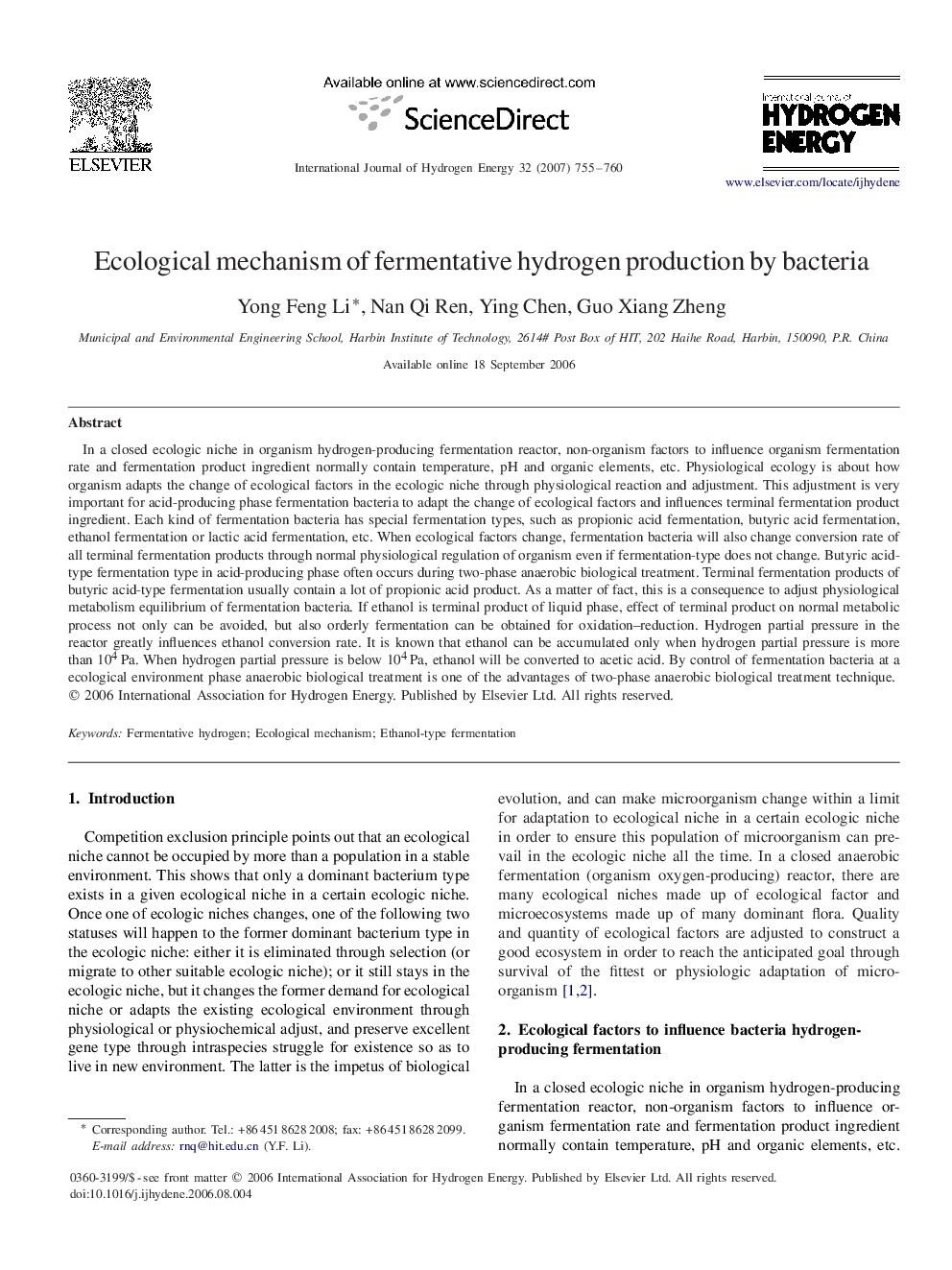| Article ID | Journal | Published Year | Pages | File Type |
|---|---|---|---|---|
| 1283876 | International Journal of Hydrogen Energy | 2007 | 6 Pages |
In a closed ecologic niche in organism hydrogen-producing fermentation reactor, non-organism factors to influence organism fermentation rate and fermentation product ingredient normally contain temperature, pH and organic elements, etc. Physiological ecology is about how organism adapts the change of ecological factors in the ecologic niche through physiological reaction and adjustment. This adjustment is very important for acid-producing phase fermentation bacteria to adapt the change of ecological factors and influences terminal fermentation product ingredient. Each kind of fermentation bacteria has special fermentation types, such as propionic acid fermentation, butyric acid fermentation, ethanol fermentation or lactic acid fermentation, etc. When ecological factors change, fermentation bacteria will also change conversion rate of all terminal fermentation products through normal physiological regulation of organism even if fermentation-type does not change. Butyric acid-type fermentation type in acid-producing phase often occurs during two-phase anaerobic biological treatment. Terminal fermentation products of butyric acid-type fermentation usually contain a lot of propionic acid product. As a matter of fact, this is a consequence to adjust physiological metabolism equilibrium of fermentation bacteria. If ethanol is terminal product of liquid phase, effect of terminal product on normal metabolic process not only can be avoided, but also orderly fermentation can be obtained for oxidation–reduction. Hydrogen partial pressure in the reactor greatly influences ethanol conversion rate. It is known that ethanol can be accumulated only when hydrogen partial pressure is more than 104Pa. When hydrogen partial pressure is below 104Pa, ethanol will be converted to acetic acid. By control of fermentation bacteria at a ecological environment phase anaerobic biological treatment is one of the advantages of two-phase anaerobic biological treatment technique.
